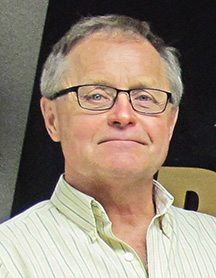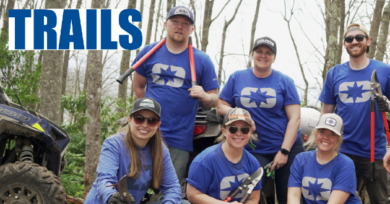Donn Eide
Engine Test and Design Manager
Arctic Cat
After sourcing its snowmobile engines from Suzuki for decades, 2014 marks the first year of Arctic Cat’s homegrown, built-in-house 600 DSI twin engine. The release of the all-new 600 two-stroke is a major event for the company, its customers and for Donn Eide, who had a major role in the C-TEC2’s development and has been with Arctic Cat for more than 40 years, excluding a brief stint elsewhere when the original Arctic Cat closed in the early 1980s.
Eide shared some of the performance targets, challenges and proud moments that are all part of the company’s new engine, which will be built at Arctic Cat’s manufacturing plant in St. Cloud, Minn.
What were your targets when designing this particular powerplant?
“Initially, we targeted the Tier 3 EPA emissions standards, which is 2012, and at the same time [we targeted] improved fuel economy. We wanted to retain the cost and weight and simplicity of the current battery-less EFI system.”
Arctic Cat has always had very strong engines, but were there ever communications problems or any back-and-forth with Suzuki in Japan that you’re now able to avoid with your new arrangement? Any hurdles over the years?

“It got better over the years because you could email back and forth. Before, we were writing ideas on a piece of paper and faxing it. But overall, we had a really good relationship over the years with [Suzuki designers]. We became friends. Both groups developed great friendships that will last forever.”
With this new El Tigré engine, obviously there’s a lot new here, but you also maintained a lot that Cat customers are used to seeing — the power vales, laydown design, etc. Is that a function of being a layout that you knew worked or were comfortable with, or are there other reasons?
“That’s probably one of the bigger answers for when people ask why they should trust a first-year motor. Well, we took a proven design — probably the best design in the industry by far in terms of strength and durability — and we didn’t want to deviate too far from it.”
There are three different manufacturers building fuel injection systems for two-strokes, with three different ways of doing it. BRP’s is pretty complex; Polaris has a different approach with its Cleanfires. Speak to the unique advantage of your new system.
“Cost and weight … and we have more control of when we’re injecting the fuel onto the piston versus the Polaris. The Polaris is further upstream, getting in the crank case and boost port. They inject into the boost port, where we inject onto the dome of the piston. We have better control of the fuel spray and trapping. Less [escaping] out the exhaust port.”
We talked about the injection system. When you first showed this engine in St. Cloud, you talked about the crank and reed design. Are there a couple of elements that you are really proud of?
“You mentioned the obvious ones, but there are other things. We now have a complete sealed center gear oil bath, but that’s not too exciting except to some of us. All of our engines in the past pretty much had the center gear being lubricated by a mechanical oil pump, where we had to simply inject some quantity of oil into the gear area and later, when you shut the engine off, the oil would accumulate in the bottom of the crankcase and when started later had to be used up by the motor, so you had a lot of smoke [on] start-up. Now this system is a sealed, controlled oil bath full of oil at all times and never consumed by the engine.”








